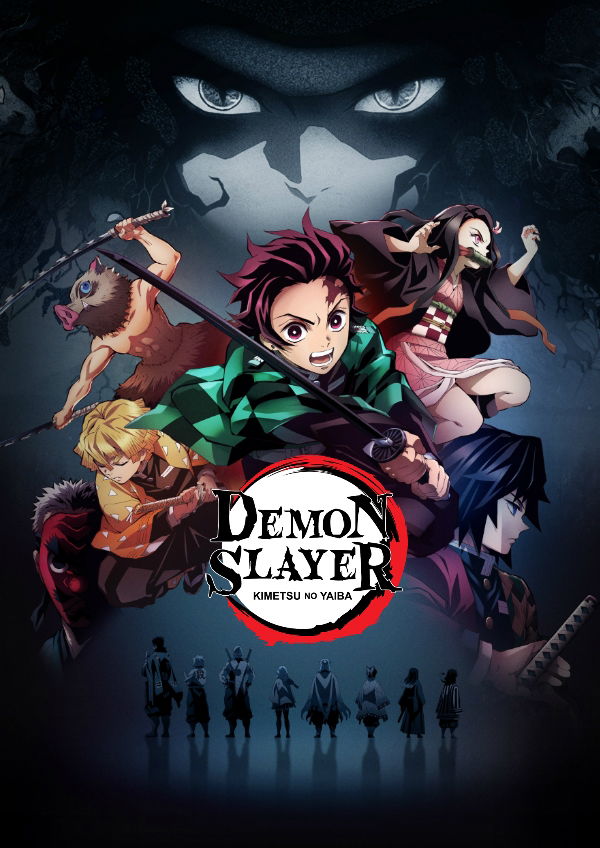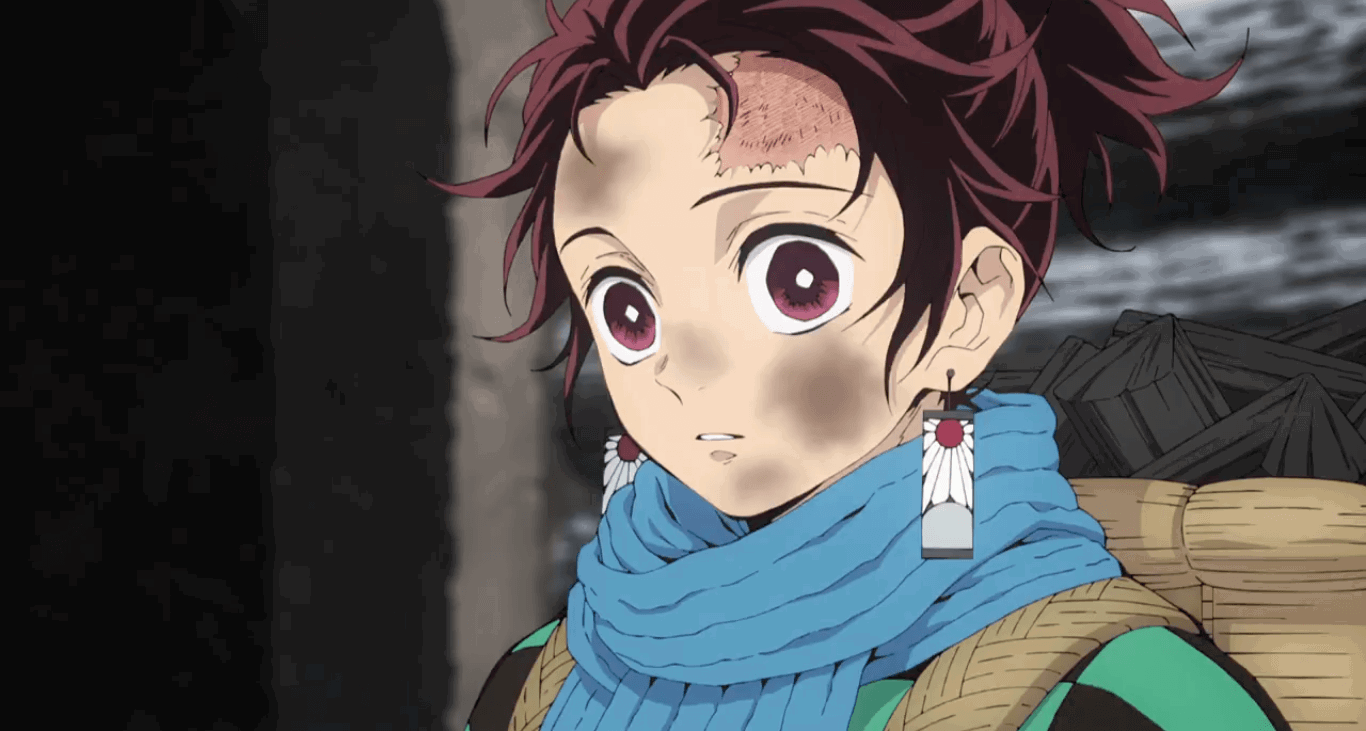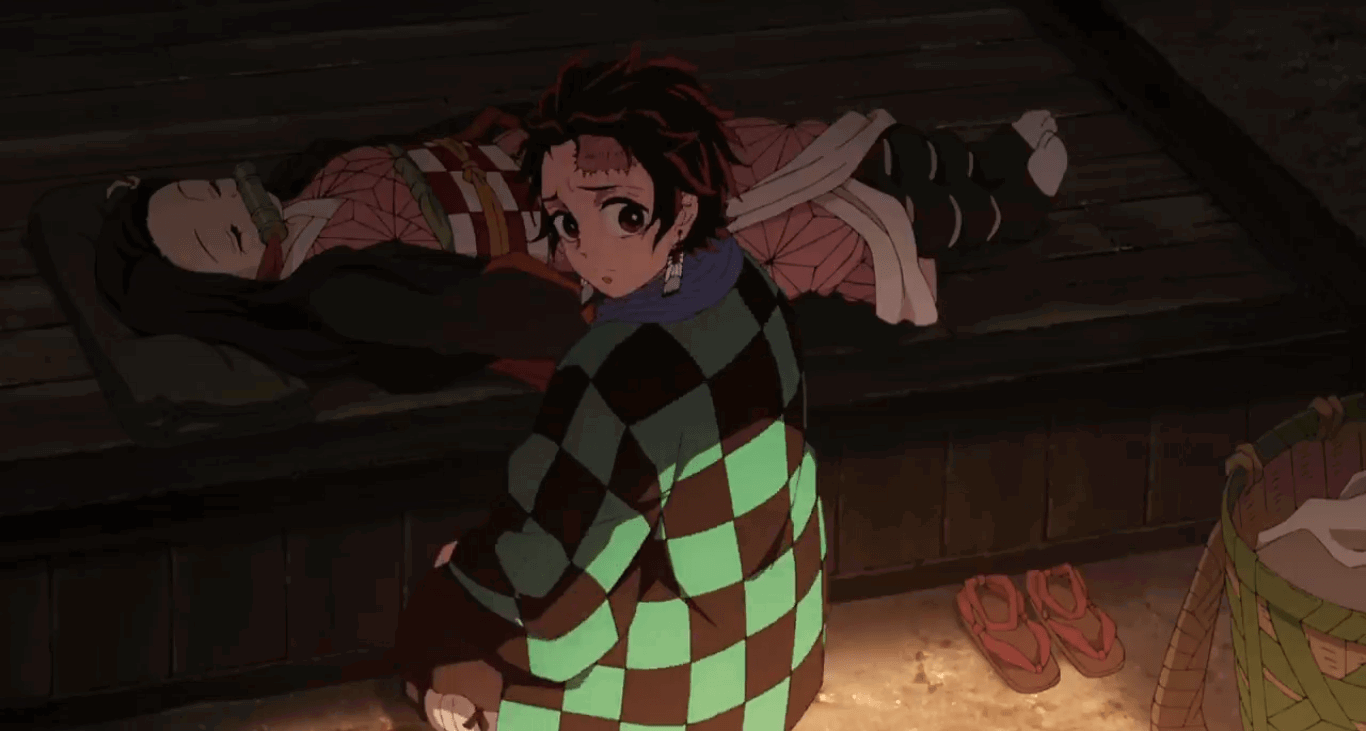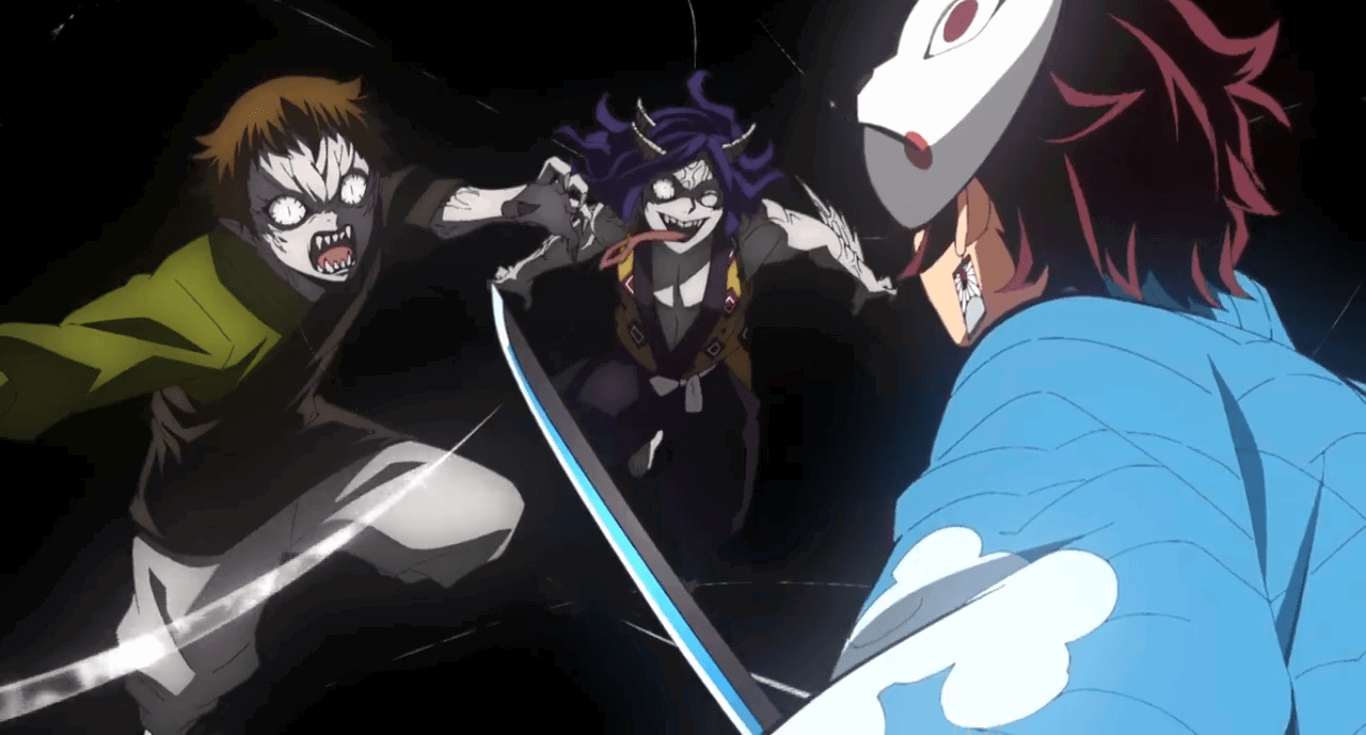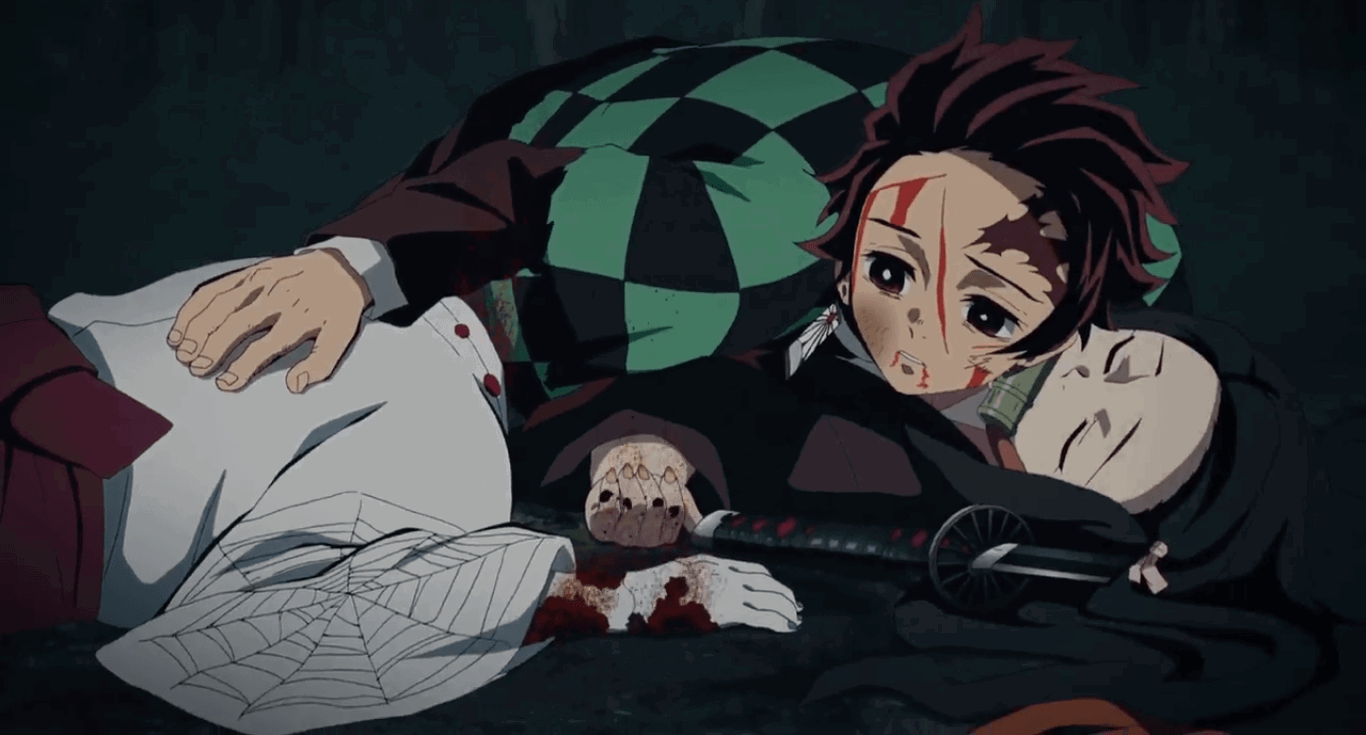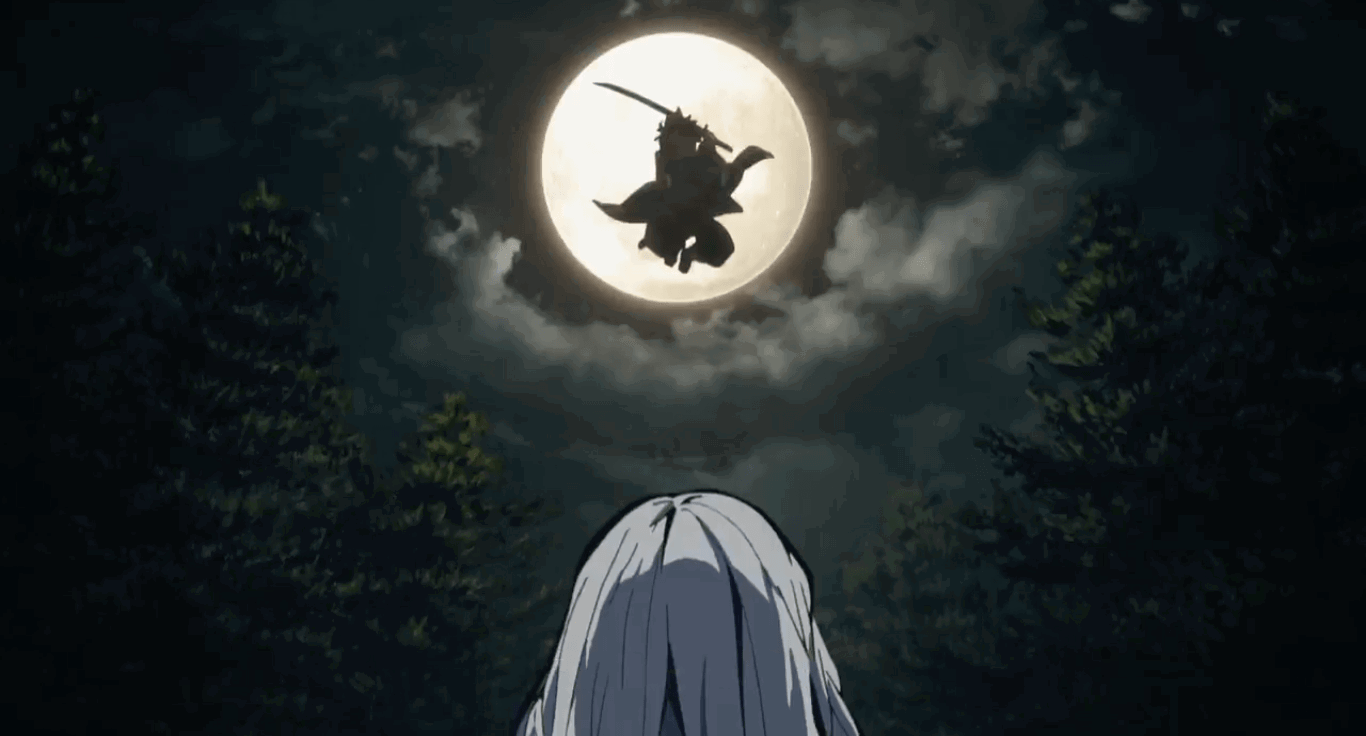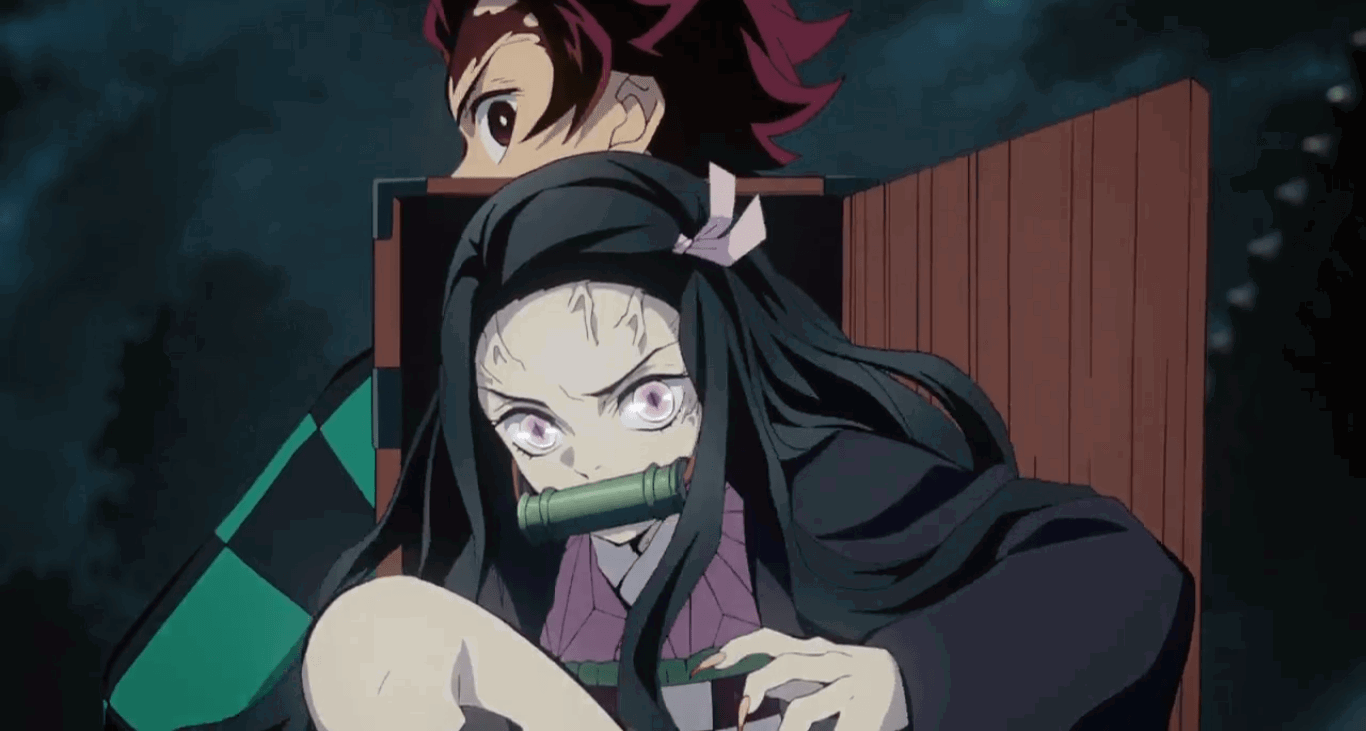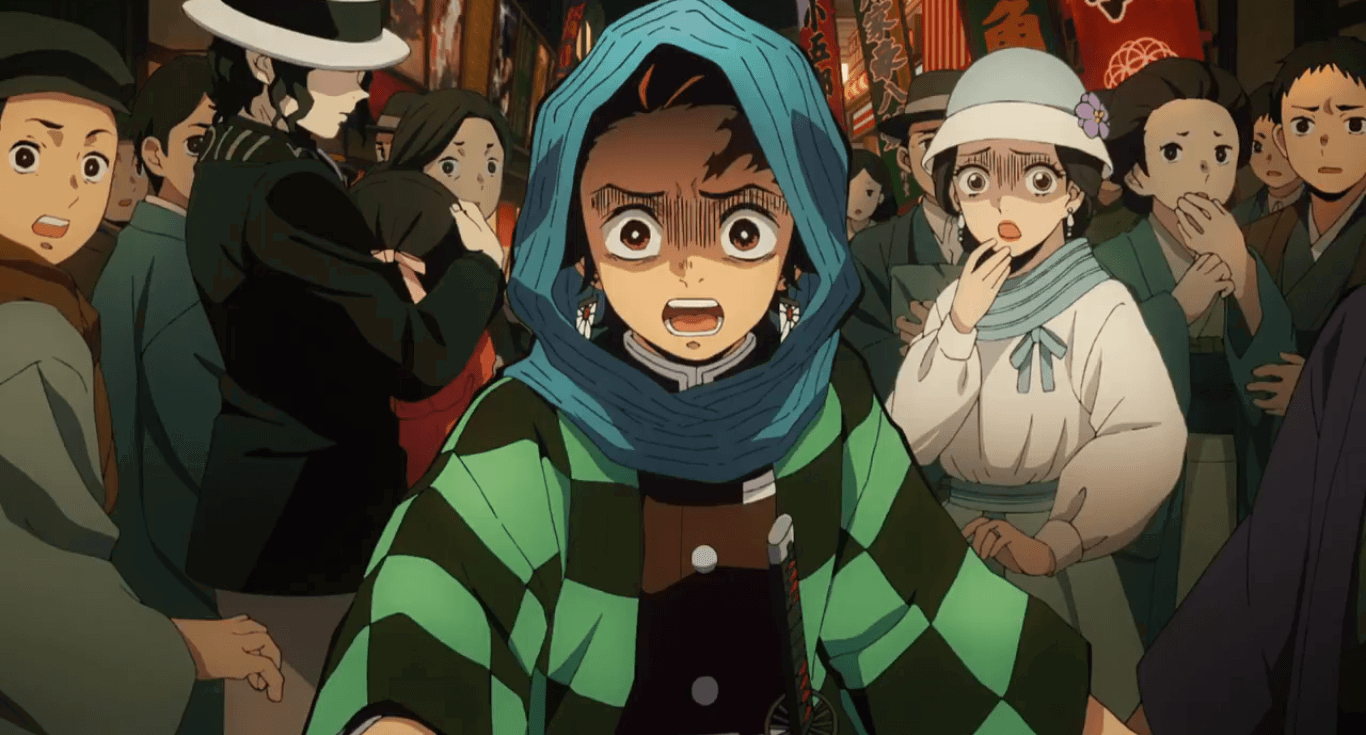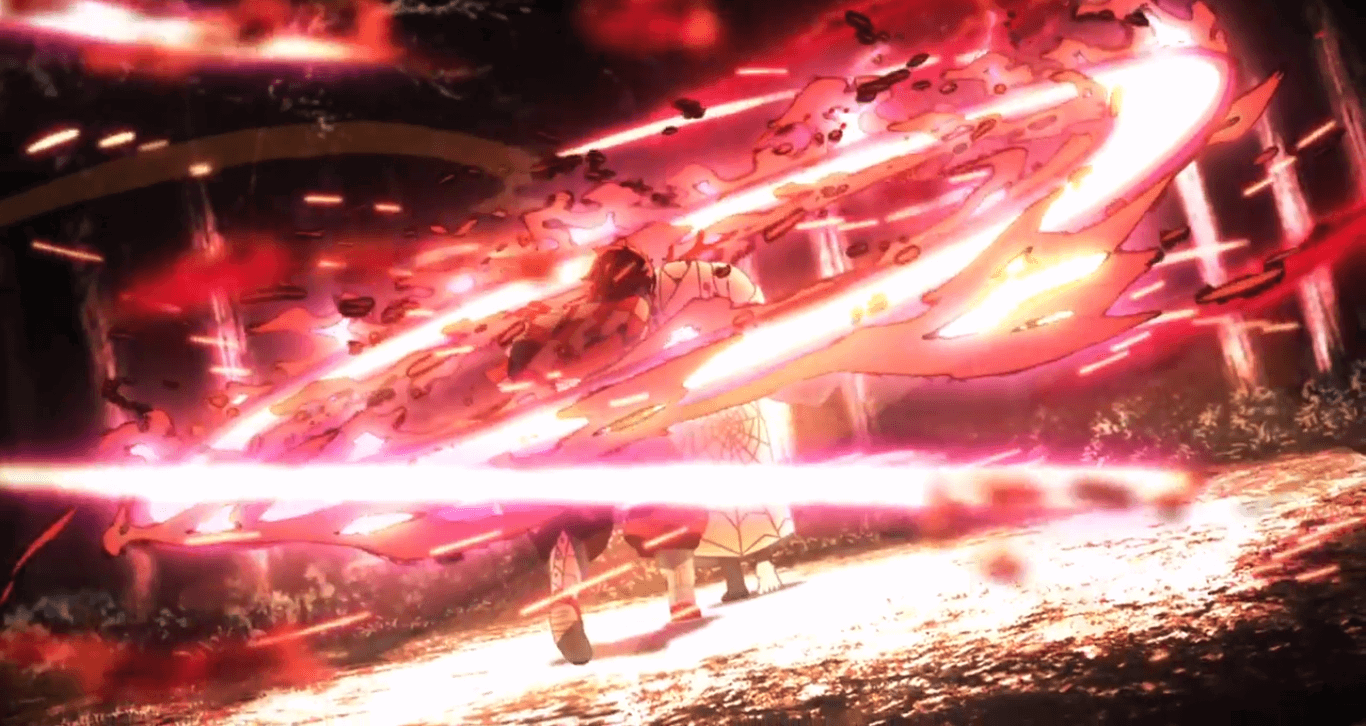Original Run: April 6, 2019 - September 28, 2019 Number of Episodes: 26 Genre: Action, Historical, Supernatural Based on the Series Created By: Koyoharu Gotouge
***Warning, the following may contain spoilers for Demon Slayer: Kimetsu no Yaiba. Reader discretion is advised.***
Series Synopsis
One day, the peaceful life of Tanjirou Kamado (voiced by Natsuki Hanae) is taken away from him when a demon slaughters his family. The only survivor is his younger sister Nezuko (voiced by Akari Kitou). Unbeknownst to Tanjirou, though, the horror of the attack wasn’t over. Beloved Nezuko transforms into a blood-thirsty demon.
Tanjirou desperately tries to call out to his sister, but this only catches the attention of a member of the mysterious Demon Slayer Corps. Tanjirou pleads for his sister’s life to be spared when something unprecedented happens. When it looks like the Demon Slayer is about to hurt Tanjirou for getting in the way, Nezuko fights to defend her brother. For a demon to protect a human, the idea is simply unthinkable.
The Demon Slayer agrees to let the siblings go and tells them there might be a chance – a very slim chance – of returning Nezuko’s humanity. Tanjirou will need to find the demon who killed his family, and to do that he must join the ranks of the Demon Slayer Corps.
For brother and sister, the long road of death and suffering has only just begun.
Series Positives
Before anything else in this review, it must be said that Demon Slayer: Kimetsu no Yaiba (Demon Slayer) desperately needs a televised sequel. Although the announced theatrical sequel, Demon Slayer Movie: Infinity Train (release date still unknown at the time of this post going live), is a good start, a season two is necessary.
For its part, Demon Slayer took its time to introduce its most central elements. It wasn’t until the series was reaching its end did it feel as though there was a full grasp of the world. That isn’t to say this show was slow. It was quick but methodical too. It never lingered on something longer than it had to. It did this so much that the bigger adventure didn’t seem ready until the final episode.
Essentially, what I’m getting at is:
- Content most other anime try to cram into twelve episodes, Demon Slayer stretched out to fill twenty-six.
- This show was a lot of goddamn fun, and I want more.
There is a difference between padding and establishing. When a series is padding, it is needlessly dragging out its narrative with frivolous nonsense and is a colossal waste of time. When a series is establishing, a story is trying to flesh out its world and craft the characters we will need to follow throughout the rest of the journey. When this happens, there might be silliness, comic relief, and periods of little to no action, but rarely are these moments without purpose.
For example, I suspect Infinity Train will focus most of its attention on story progression and impressive fight scenes. Why? Thanks to the series, we already have a concrete foundation of who all the leading players are. We know their strengths. We know what they can and cannot do. We know how big of a threat everyone is up against.
Since Demon Slayer, the show, wasn’t in a rush to dump as much information as it could on us, there was a more definite sense of what was going on and how everything worked.
That was what Demon Slayer managed to do. However, the question we should be asking is: How did it manage to do it?
The short answer to that is, through its characters. For the longer answer, let’s hold off for a second so we might appreciate two important aspects of this series.
- The animation of Demon Slayer was outstanding.
- The setting of this story could not have been a better choice.
To that first point, Demon Slayer had a lot of obvious CGI, but it had a lot of obvious CGI that worked. Most other shows that try to supplement their visuals with computers, whether it is the backgrounds, mobs of extras, and/or giant monsters, everything looks doll-ish, disconnected, and out of place. In Demon Slayer, there was a style that embraced this type of plastic-like animation. There were more colors, more details. Everything was bigger, flashier, and spectacular. This made the fights in this series insanely entertaining.
To that second point, the story of Demon Slayer was set during a time you don’t often see in anime. This show took place during the Taisho era. For you non-Japanese-history buffs, the Taisho era was from 1912 to 1926. Here, Japan’s period of rapid industrialization was in full effect. Cities, such as Tokyo, were very much like New York or London, with bright lights and technology. Go to the countryside, though, and the Japan of this era and the Japan of two hundred years prior weren’t all that different.
In this environment, Demon Slayer had the mystique of classic samurai films, but there was also an unease. If this story were non-fiction, then it wouldn’t have occurred all that long ago in the grand scheme of things.
Both animation and setting are topics I don’t usually spend that much energy focusing on. For Demon Slayer, though, they impressed me so much that it would have felt wrong if I didn’t mention them in this review.
Returning to my main point, this series’ characters were its most enduring feature. They were what allowed the animation, the setting, the action, and the rest of this show to be as good as it was. If we were to boil what Demon Slayer did down to a single element, this story knew how to create sympathy.
For the members of the Demon Slayer Corps, this wasn’t hard. All of them had been affected by the cruelty of demons in some form. It doesn’t take much to understand the amount of fear, anger, and suffering that can be generated when the people you love most dearly get brutally slaughtered by blood-thirsty creatures.
What is far more challenging is building sympathy for those blood-thirsty creatures.
Demon Slayer always made it a priority to remind us that the demons in its story were once human. With only the rarest of exceptions, no one chose to become a demon. Either through bad fortune, terror, or happenstance, those who had lost their humanity had some of the saddest tales of all. While it is true that the atrocities they committed were inexcusable, in their last moments, these demons were finally freed from the pain that had been consuming them.
But to achieve that sort of reconciliation, the demons needed to face a foe who could release them from their torment. That was where Tanjirou came in. He only drew his blade against demons who had already bared their fangs. Even still, if the opportunity arose, Tanjirou made sure to make a kill as painless and as peaceful as possible.
Accordingly, I would urge you not to assume Tanjirou was a pushover. He may have been an idealist, but he also knew when he had to fight. And when it was time to fight, he was very good at it. Not just in the sense of he was strong (which he was), but in the sense that he was adaptable.
There were many instances when Tanjirou was thrown a curveball – i.e., the bad guy wasn’t defeated after Tanjirou played his trump card. While there have been many protagonists who became disheartened when their ultimate move failed, Tanjirou wasn’t like that. He may have been caught off guard, sure, but he never dwelled on what should never be a surprise. He was acutely aware that his opponents could have abilities that greatly exceeded his own and adjusted accordingly.
Also, it was nice to see when Tanjirou was completely out of stamina, he was completely out of stamina. There was no one final miracle push. When someone is running on empty, that is it; there is nothing more to give no matter what the story might say. Again, padding versus establishing. For a shounen anime (Dragonball, Fairy Tail, Naruto, etc.) to acknowledge that is rare indeed.
As for the rest of Demon Slayer’s cast, without going into detail like I did with Tanjirou, I should, at least, acknowledge Nezuko Kamado, as well as Zenitsu Agatsuma and Inosuke Hashibira (voiced respectively by Hiro Shimono and Yoshitsugu Matsuoka). These four were equally amazing to follow. Together, this group put life and shine into what could have easily been a severely dark and gloomy series, almost exceedingly so.
I realized halfway through Demon Slayer that it wasn’t going to come anywhere near a finale. Hopefully, this is the first chapter in a much more expansive story.
Series Negatives
This section will be much shorter than the last, but there was one thing this series did that didn’t sit well with me.
Like I mentioned – almost offhandedly – near the end of the Series Positives, Tanjirou, Nezuko, Zenitsu, and Inosuke were tons of fun. All four of them were overflowing with personality, and they were instrumental in injecting this show with plenty of humor.
Don’t get me wrong. Demon Slayer was not a comedy. However, a story doesn’t need to be a comedy to have jokes. Even in the face of death, blood, and violence, a bit of laughter can sneak its way in. Granted, any inherently dark narrative does need to tread lightly. These shows can have silly moments, but not all its moments can be silly.
Demon Slayer didn’t always maintain that.
This happened much more often following the point where Zenitsu and Inosuke began to truly take part in this series. Both characters were loud, energetic, and they would react first and clean up their messes never. This dynamic was great when Demon Slayer was in a stretch of peace. Too bad when things did get serious, it took these two much longer than it should have for them to tone it down.
Take, for example, the very first time we met Zenitsu. It is right after Final Selection (the test to determine whether someone will become a slayer). Final Selection was notoriously dangerous, and it was expected that most who attempted it would die a horrible death. Zenitsu, along with Tenjirou and a small handful of other survivors, passed. And yet, it was Zenitsu who was having the existential crisis. Final Selection had severely scarred him, and he kept muttering how he was doomed to be killed. It was the fear of someone who was broken and shattered.
Turns out, though, Zenitsu was just a massive chicken by nature. Everything scared him. He was quick to give up. He hated putting in the slightest bit of effort. He was willing to do anything to make sure he stayed safe and unhurt. Zenitsu did this in the same boisterous way that allowed him to be fun when nothing was going on. The problem was, he continued to be this way even when all hell was happening around him. Only when he was in his most desperate state did Demon Slayer Zenitsu come out (who was pretty badass I will add).
To conclude this section, Demon Slayer wasn’t great at transitioning between serious mode and comedy mode. The series would eventually get where it needed to be, but sometimes things felt a tad inappropriate.
Final Thoughts
I am looking forward to the movie, but I am also desperately hoping for news of a season two. I want so much more from this series, and I think there is plenty left that can be satisfying.
This show was beautiful to look at, the setting was fascinating, the action was intense and exciting, and above all else, the characters were a blast.
Sitting through twenty-six episodes in one go does take time, but I would have gladly sat through much, much more.
Demon Slayer: Kimetsu no Yaiba has earned a recommendation.
But these are just my thoughts. What are yours? Have you seen this show? How would you advise Demon Slayer: Kimetsu no Yaiba? Leave a comment down below because I would love to hear what you have to say.
And if you’ve liked what you read and want more anime content, please follow me at LofZOdyssey Anime Reviews or on Twitter @thelofzodyssey.
Also, be sure to subscribe here at The Outerhaven and never miss all your video game, anime, and other nerdom news and content.
I’m LofZOdyssey, and I will see you next time.



